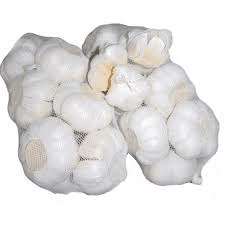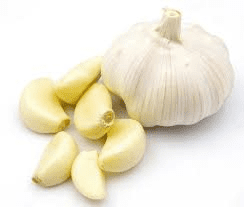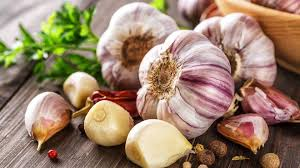Processing, packaging, and exporting garlic involves several detailed steps to ensure the product meets quality standards and regulations for international trade. This guide will help you understand each phase from harvesting to exporting garlic profitably.
Harvest garlic when the lower leaves turn yellow and start to dry. Dig up the bulbs carefully to avoid damage. Hang the harvested garlic in a well-ventilated area for 2-3 weeks to dry and develop a stronger flavor. After curing, remove any dirt and roots from the garlic by brushing off the dirt and trimming the roots if necessary.
Sort the garlic bulbs by size and quality, discarding any that are damaged, diseased, or too small. Prepare the garlic for packaging by ensuring that the curing process is complete and that all bulbs are clean and dry. Inspect each bulb to ensure it meets export standards for quality, size, and firmness.
Prepare the necessary export documents, including certificates of origin, phytosanitary certificates, and any other required paperwork. Store the garlic in a cool, dry place until ready to package for export.
Arrange for transport to the packaging facility or directly to the destination, ensuring the garlic is kept in ideal conditions. Ensure all processing steps comply with the importing country’s regulations and standards.
Select durable, breathable packaging materials like mesh bags, cardboard boxes, or plastic crates designed for garlic. Ensure that all packaging materials are clean and free from any contaminants or residues. Place garlic bulbs into the chosen packaging, ensuring they are not packed too tightly to avoid damage.
Clearly label each package with relevant information including the garlic variety, weight, and any other required details. Properly seal the packages to protect the garlic from moisture, pests, and other potential damage during transport. Ensure that all packaging complies with international export standards and regulations.
Inspect the packages for any signs of damage or improper sealing. Coordinate with logistics providers to transport the garlic packages to the export destination. Keep records of the packaging process, including quantities and any issues encountered. Monitor the quality of the garlic throughout the packaging process to ensure it meets export standards.
Conduct thorough research to identify profitable markets and understand demand for garlic in different regions. Develop a pricing strategy that covers costs and ensures a profit margin while remaining competitive in the target market.
Connect with potential buyers through trade shows, online platforms, and industry contacts. Negotiate favorable terms with buyers, including price, quantity, delivery schedules, and payment terms. Ensure all required export documents are prepared and accurate, including invoices, packing lists, and certificates.
Arrange for efficient and cost-effective shipping options, considering factors such as transport mode and delivery times. Stay updated on regulations and compliance requirements for both exporting and importing countries.
Maintain high standards of quality control throughout the entire export process to meet buyer expectations. Provide excellent customer service to build and maintain strong relationships with buyers. Regularly analyze export performance and adjust strategies based on feedback and market trends.
Garlic is a plant used in cooking and medicine. It has a strong flavor and is known for its health benefits. Store garlic in a cool, dry place and avoid storing it in the refrigerator as it can cause sprouting. Garlic is known for its potential benefits, including boosting the immune system and reducing blood pressure.
To prepare garlic for cooking, peel the cloves and chop or crush them according to your recipe’s requirements. Garlic can be frozen, but it’s best to peel and chop it first. Store it in airtight containers. Fresh garlic can last several months if stored properly. Once cut or cooked, it should be used within a week.
Check for mold, a strong off-smell, or soft, sprouted cloves to know if garlic has gone bad. Garlic is versatile and used in many cuisines worldwide, from Italian to Asian dishes.
Garlic may help with some health issues, such as reducing cholesterol and improving heart health, but it should not replace medical treatment.
To grow garlic, plant garlic cloves in well-drained soil in the fall. Ensure they get plenty of sunlight and water regularly.
How to Process Garlic for Exportation

1. Harvesting: Harvest garlic when the lower leaves turn yellow and start to dry. Dig up the bulbs carefully to avoid damage.
2. Curing: Hang the harvested garlic in a well-ventilated area for 2-3 weeks. This process helps the garlic dry out and develop a stronger flavor.
3. Cleaning: After curing, remove any dirt and roots from the garlic. Brush off the dirt and trim the roots if necessary.
4. Sorting: Sort the garlic bulbs by size and quality. Discard any that are damaged, diseased, or too small.
5. Packaging Preparation: Prepare the garlic for packaging by ensuring that the curing process is complete and that all bulbs are clean and dry.
6. Quality Check: Inspect each bulb to ensure it meets export standards for quality, size, and firmness.
7. Documentation: Prepare necessary export documents, including certificates of origin, phytosanitary certificates, and any other required paperwork.
8. Storage: Store the garlic in a cool, dry place until you are ready to package it for export.
9. Transport: Arrange for transport to the packaging facility or directly to the destination, ensuring the garlic is kept in ideal conditions.
10. Compliance: Ensure all processing steps comply with the importing country’s regulations and standards.
Read Also: Importance of Rabbit Urine and How to Use it
How to Package Garlic for Exportation

1. Choose Packaging Materials: Select durable, breathable packaging materials like mesh bags, cardboard boxes, or plastic crates designed for garlic.
2. Prepare Packaging: Ensure that all packaging materials are clean and free from any contaminants or residues.
3. Pack Garlic: Place garlic bulbs into the chosen packaging, ensuring they are not packed too tightly to avoid damage.
4. Label Packaging: Clearly label each package with relevant information including the garlic variety, weight, and any other required details.
5. Seal Packaging: Properly seal the packages to protect the garlic from moisture, pests, and other potential damage during transport.
6. Verify Compliance: Ensure that all packaging complies with international export standards and regulations.
7. Check for Damage: Inspect the packages for any signs of damage or improper sealing.
8. Arrange for Transportation: Coordinate with logistics providers to transport the garlic packages to the export destination.
9. Document Packaging: Keep records of the packaging process, including quantities and any issues encountered.
10. Maintain Quality Control: Monitor the quality of the garlic throughout the packaging process to ensure it meets export standards.
How to Export Garlic for Profits
1. Market Research: Conduct thorough research to identify profitable markets and understand demand for garlic in different regions.
2. Pricing Strategy: Develop a pricing strategy that covers costs and ensures a profit margin while remaining competitive in the target market.
3. Find Buyers: Connect with potential buyers through trade shows, online platforms, and industry contacts.
4. Negotiate Terms: Negotiate favorable terms with buyers, including price, quantity, delivery schedules, and payment terms.
5. Export Documentation: Ensure all required export documents are prepared and accurate, including invoices, packing lists, and certificates.
6. Shipping Logistics: Arrange for efficient and cost-effective shipping options, considering factors such as transport mode and delivery times.
7. Monitor Compliance: Stay updated on regulations and compliance requirements for both exporting and importing countries.
8. Quality Assurance: Maintain high standards of quality control throughout the entire export process to meet buyer expectations.
9. Customer Service: Provide excellent customer service to build and maintain strong relationships with buyers.
10. Analyze Performance: Regularly analyze export performance and adjust strategies based on feedback and market trends.
Read Also: Common Rabbit Diseases and How to Cure them
Frequently Asked Questions (FAQ’s) About Garlic

1. What is garlic? Garlic is a plant used in cooking and medicine. It has a strong flavor and is known for its health benefits.
2. How do I store garlic? Store garlic in a cool, dry place. Avoid storing it in the refrigerator as it can cause sprouting.
3. What are the health benefits of garlic? Garlic is known for its potential benefits, including boosting the immune system and reducing blood pressure.
4. How do I prepare garlic for cooking? Peel the cloves and chop or crush them according to your recipe’s requirements.
5. Can garlic be frozen? Yes, garlic can be frozen, but it’s best to peel and chop it first. Store it in airtight containers.
6. How long does garlic last? Fresh garlic can last several months if stored properly. Once cut or cooked, it should be used within a week.
7. How do I know if garlic has gone bad? Check for mold, a strong off-smell, or soft, sprouted cloves. These are signs that garlic has gone bad.
8. Can garlic be used in all cuisines? Yes, garlic is versatile and used in many cuisines worldwide, from Italian to Asian dishes.
9. Is garlic effective for health issues? Garlic may help with some health issues, such as reducing cholesterol and improving heart health, but it should not replace medical treatment.
10. How do I grow garlic? Plant garlic cloves in well-drained soil in the fall. Ensure they get plenty of sunlight and water regularly.
Read Also: Guide to Waste Management Industry Trends

